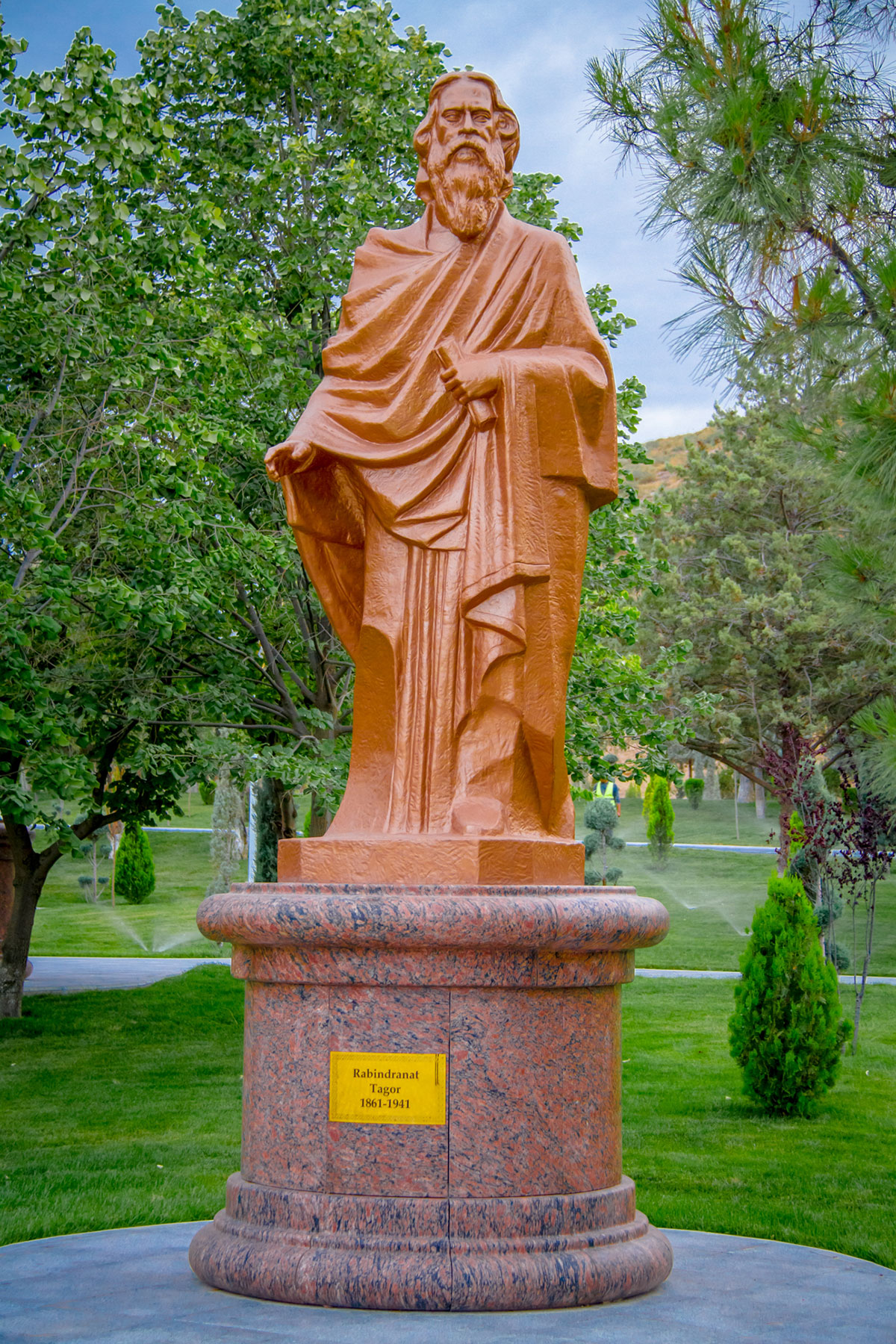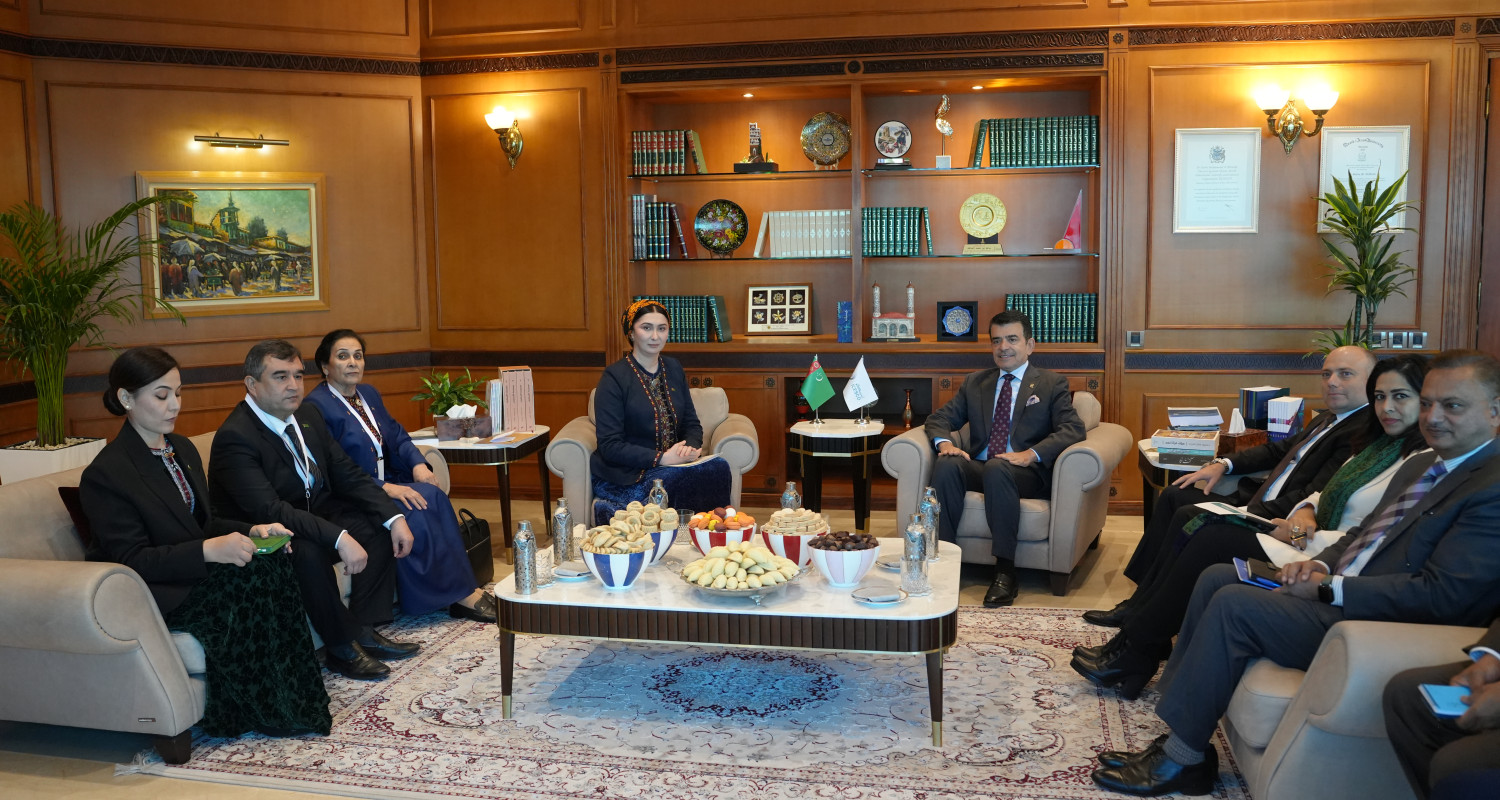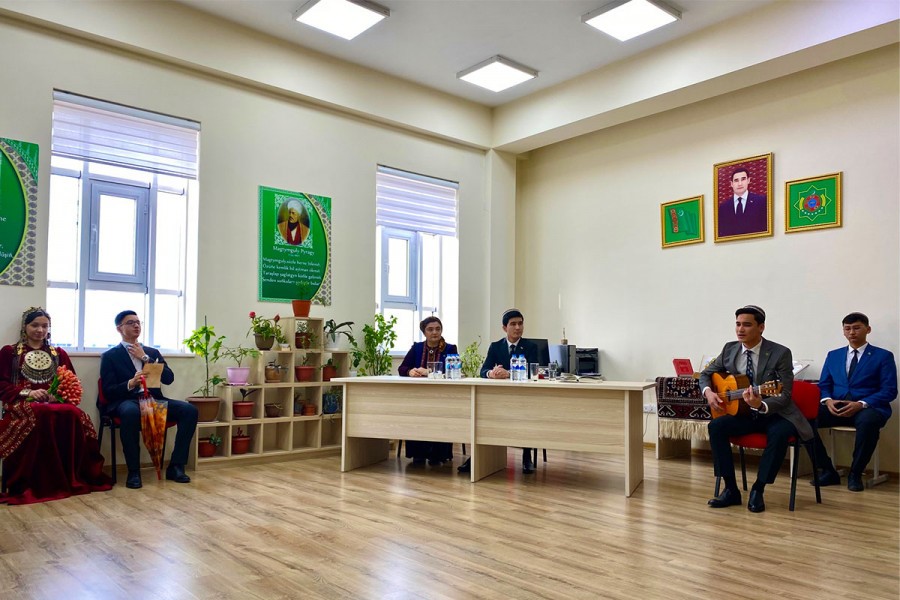This year, in a solemn atmosphere to mark the 300th anniversary of the birth of the classic of Turkmen literature Magtymguly Fragi and in his honour, a new cultural and park complex of the capital was opened in the foothills of Kopetdag. It is symbolic that this large-scale facility, in addition to the majestic monument to Magtymguly, includes an alley of famous poets and philosophers of various countries and epochs, which emphasises its significance in the context of friendship between peoples and the unity of the cultural heritage of mankind.
There are 24 monuments to world-famous writers and poets from different countries of the world installed on the territory of the park complex. The editors of the «Golden Age» considered it right, if possible, to acquaint the reader, especially children and adolescents, with the life and work of outstanding personalities whose monuments adorn the Magtymguly Alley. This is also important because some of the geniuses of their time presented here visited Turkmenistan. «GA», publishing information about them, does not in any way claim to fully cover materials about this or that person, especially since not much information has been preserved about many of them after a long period of time.
Our short story today is about Rabindranath Tagore.
Rabindranath Tagore is an Indian writer, poet, composer, artist, and public figure. He was the first non-European to be awarded the Nobel Prize in Literature. Tagore began writing poetry at the age of eight. At sixteen, he wrote his first short stories and dramas. His most famous works, «Gitanjali» (Sacrificial Chants), «Gora» and «Home and the World», are examples of lyricism, conversational style, naturalism, and contemplation in literature. The Tagore family was very famous. They were large landowners, and many famous writers, musicians, and public figures visited their home.
On the 14th of November, 2013, Tagore learned that he had won the Nobel Prize in Literature for his deeply felt, original, and beautiful poems, which expressed his poetic thinking with exceptional skill. The Nobel Prize money awarded by Tagore went to his school in Santiniketan, which later became the first free university. In his later years, Tagore became interested in science. He wrote an essay, «Our Universe». His studies of biology, physics, and astronomy found expression in his poetry. Tagore also painted and composed music.
Tagore wrote not only the text of the poem «Janaganamana», which became the anthem of India, but also the music to which it is performed. Tagore's drawings, made in watercolour, pen and ink, were exhibited in many countries. Tagore composed about 2,230 songs. Tagore's assistant Ami Chakravarty noted that the poet's poems were so popular with ordinary Bengalis that they were often perceived by them as folk songs. After a long illness, Tagore died at the age of 80 in the Jorasanko estate.
Numerous festivals and celebrations are held annually in memory of Rabindranath Tagore.
A crater on Mercury is named after him.








